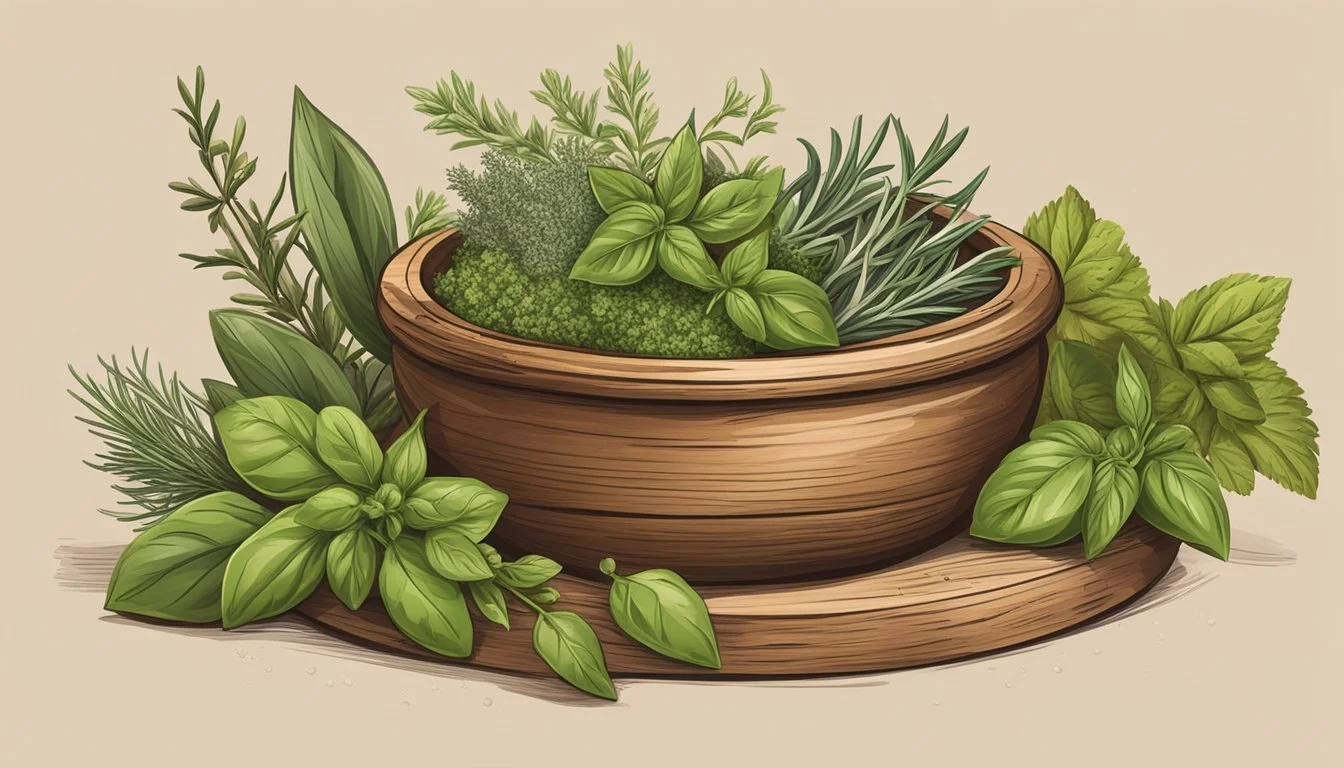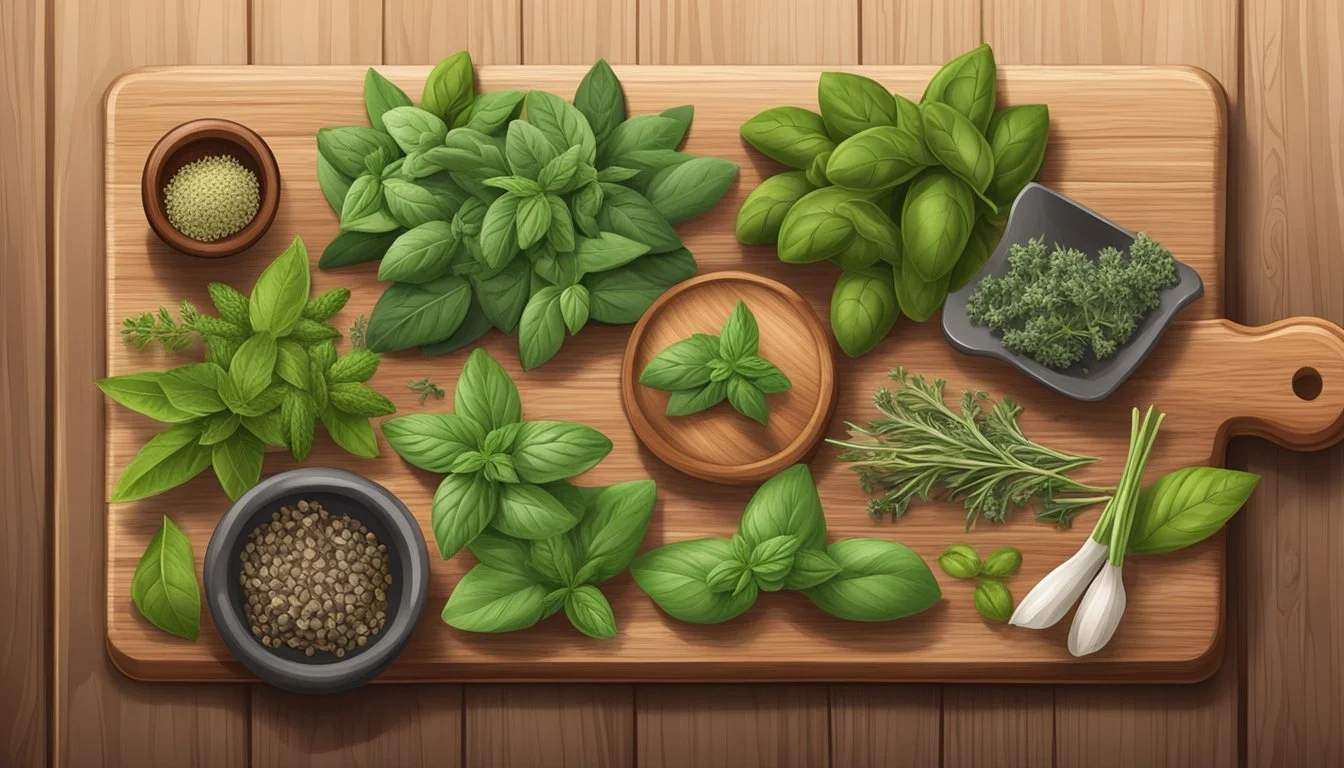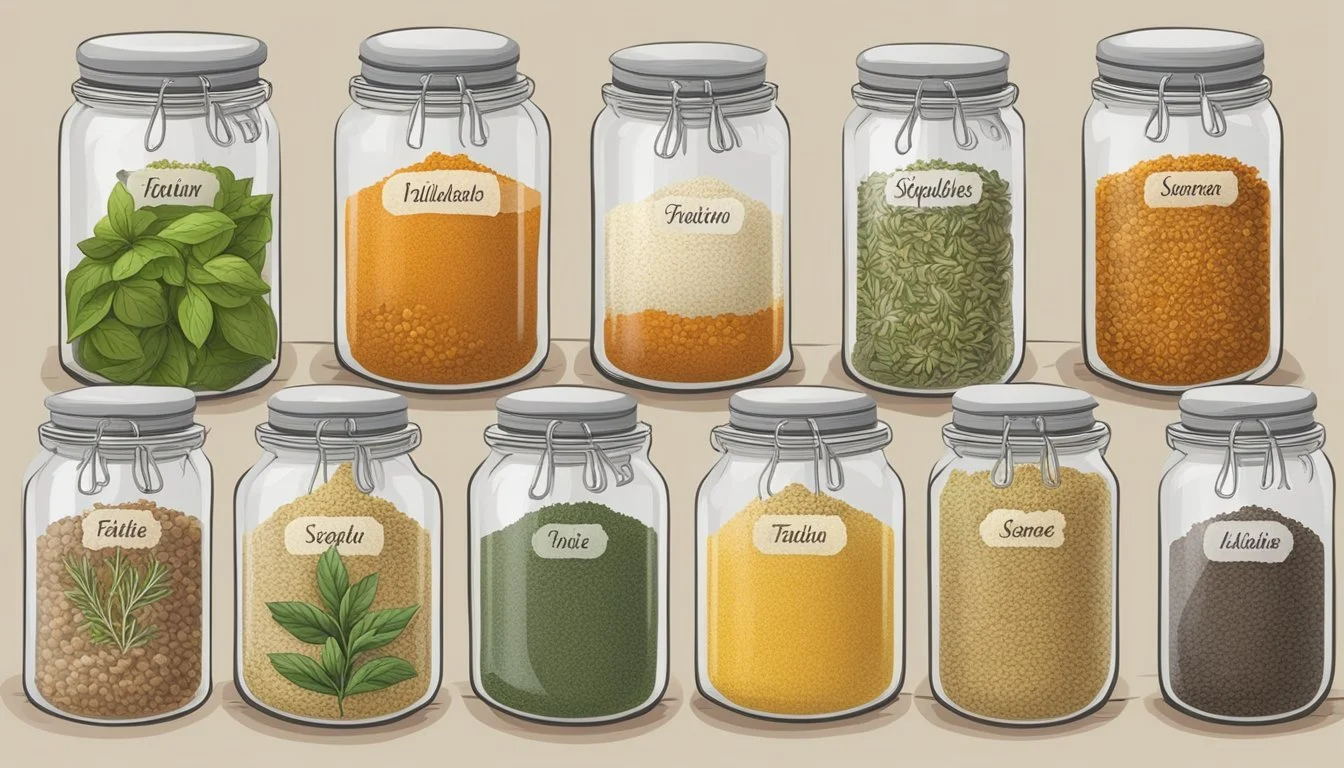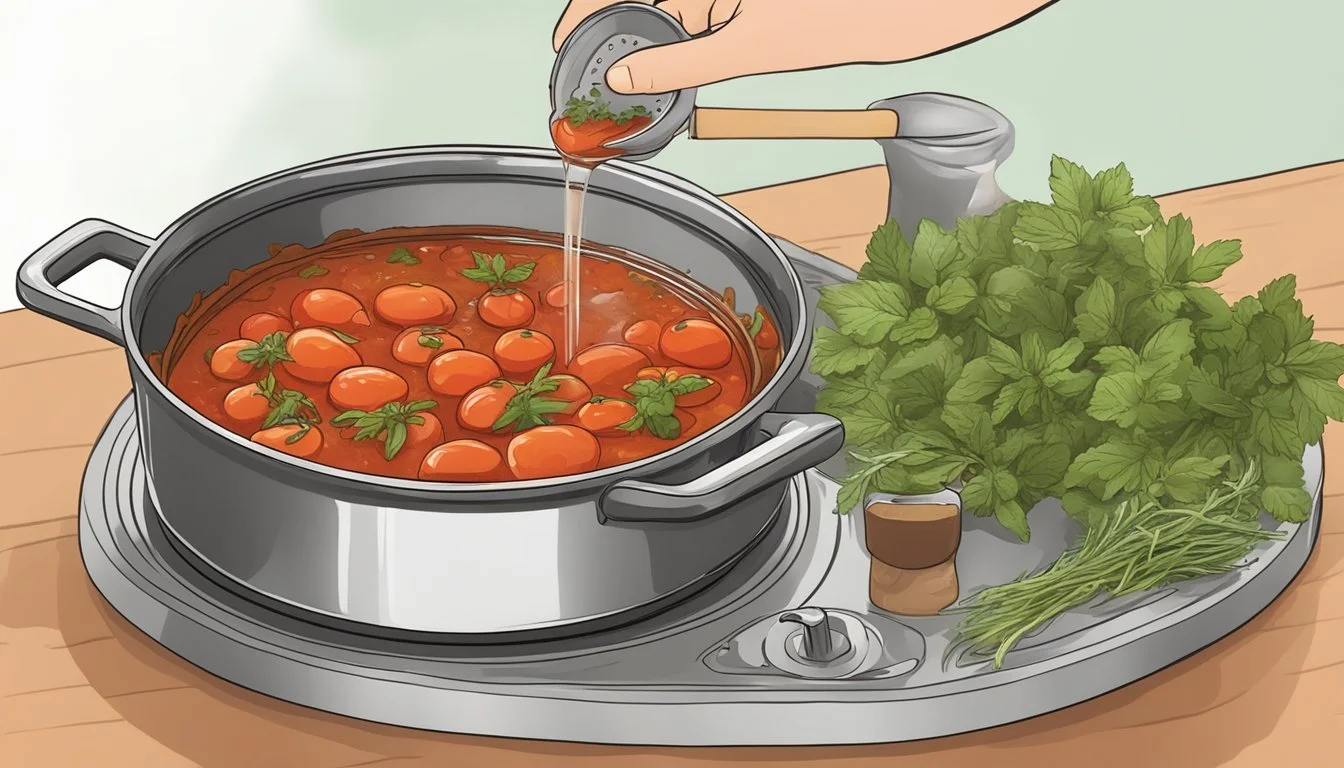Italian Seasoning Substitutes
Top Alternatives for Your Recipes
Italian seasoning is a staple in Mediterranean cuisine, known for its robust flavor profile that complements a wide range of dishes. It typically includes a blend of dried herbs such as oregano, basil, thyme, sage, and rosemary. This aromatic combination captures the essence of Italian cooking, enhancing everything from classic pasta sauces to grilled vegetables and meats. However, when this key ingredient is missing from the pantry, culinary enthusiasts need to be able to find suitable replacements without compromising the dish's authenticity.
Crafting a substitute for Italian seasoning is less about finding an exact match and more about achieving a similar flavor complexity. A basic mix of dried oregano and basil can serve as a foundational substitute, as these two herbs are often the dominant flavors in many Italian blends. For more nuanced dishes, adding thyme, which imparts a slightly earthy tone, and marjoram, for its mild sweetness, can round out the herbal notes commonly found in traditional Italian seasoning.
Understanding the components of Italian seasoning allows cooks to experiment and adjust according to the dish's requirements and their palate preferences. When Italian seasoning is not an option, combinations of these common garden herbs can bring dishes close to the desired Mediterranean zest. The key is balancing the individual flavors to complement each other and the food they season, ensuring that the spirit of Italian cooking remains present.
Understanding Italian Seasoning
Italian seasoning is a staple blend in Mediterranean cuisine, embodying a medley of herbs that bring to dishes the quintessential flavors of Italy. The mixture is versatile and can be employed in various culinary contexts.
Key Ingredients
The primary components of Italian seasoning typically include:
Oregano: A robust herb with a peppery bite.
Basil: Sweet and slightly minty, basil offers a freshness to the blend.
Thyme: Adds a subtle earthiness with lemony and floral notes.
Rosemary: Recognizable by its needle-like leaves, it contributes a woody aroma and a tea-like flavor.
Flavor Profile
Italian seasoning has a complex and balanced flavor profile characterized by:
The pungency and warmth from oregano.
A sweet and fresh undertone from basil.
Notes of earthy and minty elements, courtesy of thyme.
The aromatic and slightly bitter taste of rosemary that rounds out the palate.
Culinary Uses
Italian seasoning finds its way into a variety of dishes. It is not bound to Italian cuisine and is highly adaptable. Common uses include:
Enhancing the taste of sauces, especially tomato-based for pastas and pizzas.
As a rub or marinade for meats such as chicken, beef, or pork.
In vegetable dishes, where it complements both roasted and grilled preparations.
Sprinkled over breads or mixed into doughs for a herbed flavor.
Common Italian Seasoning Substitutes
When a recipe calls for Italian seasoning and it's not available, one can turn to several alternatives, ranging from single herbs to complex homemade blends. These substitutes capture the essence of the classic Italian flavor profile.
Single Herb Alternatives
For simplicity, single herbs can often replace Italian seasoning, particularly when the dish already contains complementary flavors.
Oregano: A robust herb with a peppery bite, it's one of the primary components of Italian seasoning.
Basil: Offers a sweet, fragrant profile and pairs well with dishes like pizza and pasta.
Thyme: Adds a subtle, earthy tone to dishes and can be used in a pinch.
Rosemary: With its strong, piney flavor, it's best used sparingly.
Sage: Its earthy and slightly peppery taste complements heartier recipes.
Marjoram: Similar to oregano but with a milder and sweeter flavor.
Homemade Blends
Creating a homemade mix allows for a tailor-made flavor profile that closely mimics Italian seasoning.
Ingredients Quantity Dried Oregano 2 parts Dried Basil 2 parts Dried Thyme 1 part Dried Rosemary 1 part Dried Marjoram 1 part Fennel Seed (optional) 1/2 part Black Pepper (optional) 1/4 part
Store-Bought Mixes
For those seeking convenience, there are several premade options that can serve as a substitute.
Herbes de Provence: Although traditionally a French blend, it contains a similar range of herbs and creates a flavor akin to Italian seasoning.
Generic “Mixed Herbs”: This blend often includes the key herbs found in Italian seasoning and can work in most recipes requiring it.
Substitutes Based on Dish Types
The key to successful flavor substitution with Italian seasoning lies in matching the substitute's profile to the specific dish being prepared. The following subsections provide guidance on how to choose the appropriate herbs and combinations for different types of dishes.
Proteins
For proteins like chicken, beef, or fish, one can create a blend with dried oregano and basil to capture the essence of Italian seasoning. For a more robust flavor, adding dried marjoram or fennel seed can enhance meat dishes.
Chicken: Mix equal parts dried basil and oregano, adding a pinch of fennel seed for an aromatic touch.
Beef: Use a mixture of oregano, basil, and marjoram to complement the hearty flavor.
Fish: A lighter touch with basil and thyme can provide the desired freshness without overpowering the fish.
Pasta, Soups, and Stews
For pasta dishes, soups (What wine goes well with soups?), and stews, where Italian seasoning is a staple, consider using dried basil and oregano as the base of your substitute mix. Greek seasoning can serve as a suitable stand-in, thanks to its similar Mediterranean flavor profile.
Pasta: A combination of oregano, basil, and a hint of rosemary can substitute well in pasta sauces.
Soups: Depending on the soup's base, adjusting the ratios of oregano, basil, and adding thyme can achieve a similar depth of flavor.
Stews: For heartier stews, oregano and marjoram can be complemented by a small amount of rosemary to mimic the complex flavors of Italian seasoning.
Salads and Dressings
In salads and dressings, where a fresh and light flavor is often preferred, substitutes should not overwhelm the other ingredients.
Salad Dressing: For a quick Italian dressing substitute, whisk together equal parts of dried oregano and basil, or use Herbes de Provence for a similar herbal note.
Marinades: To infuse proteins with Italian flavors, use a base of oregano and basil, while rosemary can add a piney scent suitable for grilling.
Herb and Spice Blends as Substitutes
When Italian seasoning is unavailable, various regional herb and spice blends can serve as excellent substitutes. Each blend brings a distinct flavor profile that can complement Italian dishes in unique ways.
Mediterranean Blends
Mediterranean herb blends often mirror Italian seasoning, featuring common ingredients like oregano and basil. One popular blend is Herbes de Provence, a French concoction that includes herbs typical of the Mediterranean region. This blend can contain:
Dried oregano
Dried basil
Lavender (for a floral note)
Other herbs like thyme and marjoram
Another staple is the Za’atar blend, which hails from the Middle East and has become popular throughout the Mediterranean. It consists of:
Sesame seeds
Sumac
Thyme
Salt
Often, oregano or marjoram
These blends provide a robust and aromatic flavor that pairs well with pastas, pizzas, and other dishes calling for Italian seasoning.
French-Inspired Blends
The French offer Herbes de la Garrigue, similar to Herbes de Provence but with a different composition that may include:
Thyme
Rosemary
Herbs found in the wild Garrigue region of France
While Herbes de Provence often contains lavender, Herbes de la Garrigue usually omits it, leaning towards a more savory profile which works well as a substitute for Italian herb blends.
Middle Eastern and Other Blends
Outside of the Mediterranean, other regional blends like Creole seasoning and Cajun seasoning from the American South can be used as alternatives. They typically contain:
Paprika
Onion powder
Garlic powder
Cayenne pepper
Oregano
Thyme
While these blends have a spicier kick, they carry many of the same herbs found in Italian seasoning. When using them as a substitute, one should adjust the amount to taste, given their robust and sometimes hot flavor.
Considering Dietary Restrictions
When selecting a substitute for Italian seasoning, individuals with dietary restrictions must carefully consider the ingredients used. Vegan diets exclude animal products, so any blends containing cheese derivatives or animal-based additives are unsuitable.
Those with allergies or intolerances should scrutinize labels for potential allergens. For instance, pre-made substitute blends may contain gluten, nuts, or soy, which are common allergens. It's essential they opt for single herbs or create their own mix to ensure compliance with their dietary needs.
Here is a table summarizing suitable Italian seasoning substitutes based on various diets:
Diet Type Suitable Substitutes Considerations Vegan Oregano, Basil, Thyme, Garlic Powder Ensure no cheese or animal additives Gluten-Free Homemade herb blends Avoid additives with gluten Nut-Free Single herbs (e.g., Rosemary, Sage) Check for cross-contamination Soy-Free Marjoram, Dried Parsley Avoid mixes with soy additives
In terms of flavor, a homemade mix is typically the best way to match the taste profile of Italian seasoning while adhering to dietary restrictions. It also allows the cook to tailor the flavor intensity and ingredient ratios to personal preferences.
Lastly, individuals following restricted diets should consider the sodium content in substitute blends, as some may contain added salt, which can affect those monitoring their sodium intake for health reasons.
Substitutions in Methods of Cooking
Italian Seasoning is versatile, pivotal for flavor enhancement across various methods of cooking. Whether used for marinating, crafting seasoning mixes, or preparing spice rubs, knowing appropriate substitutes is valuable for any cook.
Marinating
Marinades often incorporate Italian Seasoning for its rich, aromatic qualities. When unavailable, a blend of dried oregano and basil (in a 2:1 ratio) can replicate the flavor profile. For instance, in a marinara sauce recipe requiring 1 tablespoon of Italian Seasoning, one could substitute with 2 teaspoons dried oregano and 1 teaspoon dried basil to imbue the sauce with the intended herby essence.
Seasoning Mixes for Cooking
In cooking, seasoning mixes are essential to impart depth and character to dishes. A suitable substitute for Italian Seasoning in these blends is Herbes de Provence, albeit with a slight variation in taste due to the addition of lavender. For an equivalent exchange, use Herbes de Provence in a 1:1 ratio. Cooks should adjust amounts based on personal preference and the specific seasoning requirements of the dish.
Spice Rubs for Meats
When it comes to spice rubs for meats, precision in flavor is key. To substitute Italian Seasoning, a mixture of oregano, basil, and thyme can be combined, typically using a 0.5:0.25:0.25 ratio respectively. This maintains the rub's robust flavor and complements the meat's natural taste. Bold cooks might experiment further, adding rosemary or sage to capture the complete bouquet of Italian Seasoning's complex profile.
Making a Homemade Italian Seasoning
A homemade Italian seasoning blend is a versatile mix that can enhance a variety of dishes with its savory flavors. Creating this herb blend at home requires combining staple dried herbs found in the Italian culinary palette.
Ingredients: To prepare this recipe, one will need the following dried herbs:
Oregano: Provides a slightly bitter, earthy taste with minty notes.
Basil: Offers a savory and sweet flavor with a hint of mint.
Thyme: Brings a sweet, floral, and peppery essence.
Marjoram: Similar to oregano, marjoram is sweeter and has a citrus tone.
Rosemary: Contributes a woody aroma and a pine-like flavor.
The Basic Recipe: Combine equal parts of the dried herbs listed above. The simplicity of these ingredients allows one to adjust the recipe according to their taste preferences or the availability of herbs.
Example of a Basic Blend:
Herb Measurement Oregano 1 part Basil 1 part Thyme 1 part Marjoram 1 part Rosemary 1 part
To make the blend, measure the dried herbs and mix them together thoroughly. Store the blend in an airtight container to maintain freshness.
Hint for Using Fresh Herbs: If they prefer using fresh herbs, they should follow a general substitution ratio of three tablespoons of fresh herbs for every one tablespoon of dried Italian seasoning, finely chopping the fresh herbs.
In summary, a homemade Italian seasoning is easy to prepare and adaptable to one's own taste. The combination of oregano, basil, thyme, marjoram, and rosemary captures the quintessential Italian flavor profile suitable for numerous dishes.
Tips for Storing and Using Seasonings and Herbs
When preserving the flavor integrity of dried herbs and spices, proper storage is essential. These ingredients should ideally be kept in a cool, dark place, as heat, light, and moisture can degrade their quality. Glass jars with airtight lids are a preferred choice, and it's also advisable to label and date them to keep track of freshness.
Fresh herbs, on the other hand, demand a different approach. They can be stored in the refrigerator, wrapped lightly in paper towels, and placed inside plastic bags. For longer preservation, one can chop fresh herbs and freeze them in an ice-cube tray with water, which can then be easily added to dishes while cooking.
Here is a concise guide for usage:
Dried Herbs & Spices:
Add during cooking: Dried herbs and spices benefit from a longer cooking time, allowing their flavors to infuse the dish.
Crush for potency: Crushing dried herbs between your fingers before adding them to your dish can help release more flavor.
Fresh Herbs:
Add at the end: Unlike dried herbs, fresh herbs are best added towards the end of cooking to preserve their delicate flavors.
Use sparingly: Fresh herbs are more potent than dried, so a smaller amount is often sufficient.
Type Storing Usage Dried Herbs Cool, dark place in airtight containers. Best used during cooking. Fresh Herbs Refrigerator or frozen in ice cubes. Added at the end or used raw. Spices Airtight containers away from heat. Grind as needed for maximum freshness.
Each herb and spice has its own shelf life, with dried herbs generally retaining flavor for up to 1-3 years and ground spices for about 6-12 months. Whole spices last longer, potentially maintaining their characteristics for up to 5 years. Regularly sniff your seasonings to determine their potency, as a diminished aroma indicates a decrease in flavor.
Enhancing Flavors Beyond Italian Seasoning
Italian seasoning is a blend often found in traditional Italian dishes, but one can move beyond this staple to create flavor profiles that can suit a variety of cuisines and meet diverse taste preferences.
Alternative Seasonings for Specific Flavors
When the goal is to mimic or complement the flavors commonly found in Italian seasoning, the cook has access to a wide array of herbs and spices. Fennel seeds offer an anise-like flavor, often associated with Italian sausages, that pairs exceptionally well with savory dishes. Dill, though not traditionally Italian, can add a fresh, almost sweet zest that complements lighter dishes such as fish or salads.
For fans of earthy tones, the inclusion of nutmeg and white pepper can round out flavors with their distinct profiles—nutmeg bringing a warm, nutty essence and white pepper providing a sharp, pungent kick. Sumac, with its tangy lemon-like savor, can also be a compelling substitute, lending a Middle-Eastern twist to Italian-inspired dishes.
Spices for Heat
If piquancy is what a dish needs, there are a handful of seasonings that can crank up the heat while providing depth:
Cayenne pepper is a bright red spice that brings a clean, straightforward heat, which can be used sparingly for a subtle bite or liberally for a fierce kick.
Red pepper flakes consist of crushed dried chilies, which not only add spicy heat but also texture and visual appeal to a dish.
Paprika, which can range from sweet and mild to smoky and hot, injects both warmth and a burst of color into culinary creations.
These substitutes not only add a zestful punch to a meal but also offer versatility while venturing through different cuisine landscapes. With careful selection and application of these spices, one can masterfully enhance the flavors of their dishes beyond the traditional Italian palette.









